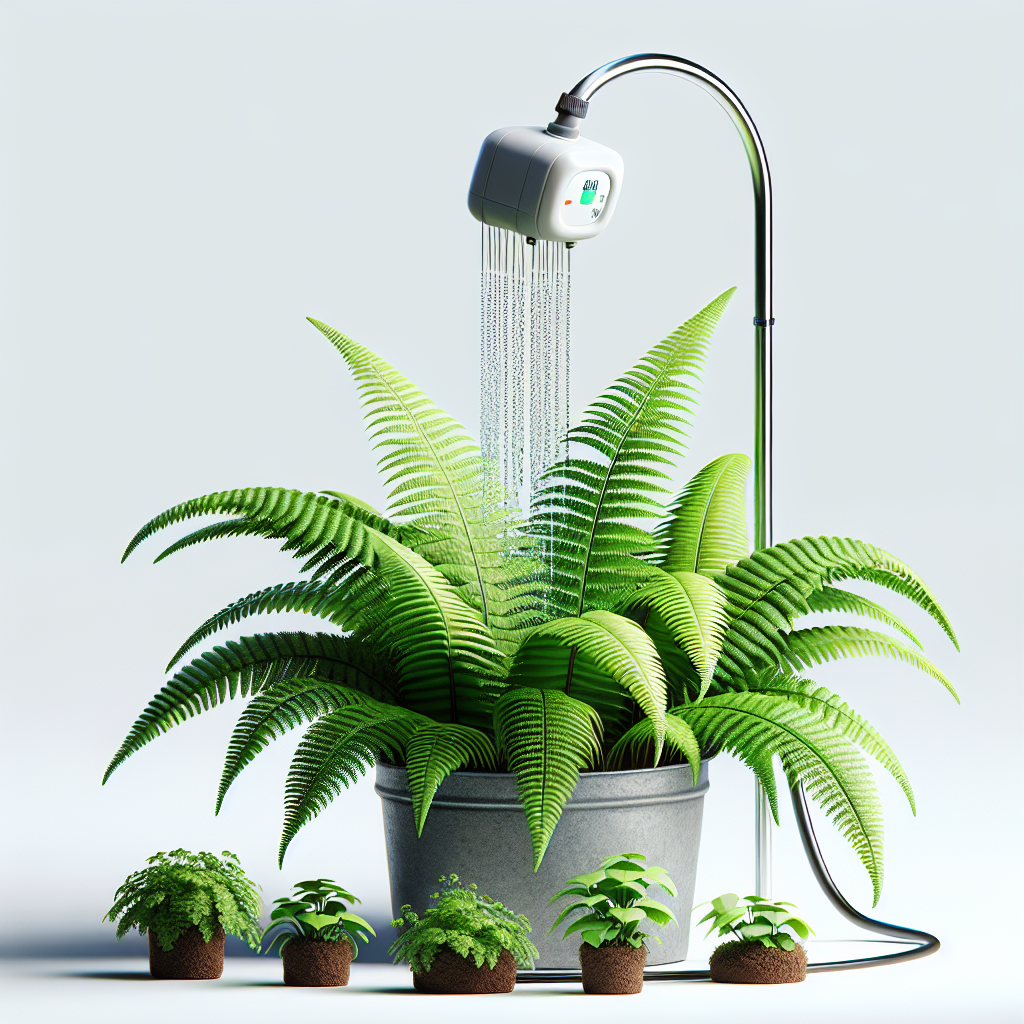Ferns are beautiful and delicate plants that can bring a touch of nature into any indoor or outdoor space. However, keeping ferns healthy and thriving can sometimes be a bit tricky, especially when it comes to watering. Overwatering or underwatering ferns can lead to wilting, yellowing leaves, and even root rot. One effective way to maintain healthy ferns is by using a slow drip watering system.
A slow drip watering system is a method of irrigation that delivers water directly to the roots of plants at a slow and steady pace. This allows the plants to absorb the water more efficiently and reduces the risk of overwatering. In the case of ferns, which prefer consistently moist soil but are also prone to root rot if left sitting in water, a slow drip watering system can be an ideal solution. By providing just the right amount of water directly to the roots, you can help your ferns stay healthy and vibrant year-round.
**Benefits of Using a Slow Drip Watering System for Ferns**
Using a slow drip watering system for your ferns has several key benefits that can help you maintain their health and beauty. Here are some of the advantages:
1. **Consistent Moisture Levels**: One of the biggest benefits of using a slow drip watering system is that it helps maintain consistent moisture levels in the soil around your ferns. This is essential for ferns, which require consistently moist soil to thrive. By delivering water directly to the roots at a slow pace, you can ensure that your ferns always have access to the moisture they need without risking overwatering.
2. **Prevents Overwatering**: Overwatering is one of the most common causes of plant problems, including root rot. With a slow drip watering system, you can avoid overwatering by providing just enough moisture for your ferns without saturating the soil.
3. **Saves Time and Effort**: Compared to manual watering methods like pouring water from a watering can or hose, a slow drip watering system requires less time and effort on your part. Once set up, the system will automatically deliver water to your ferns on a regular schedule, freeing you up to focus on other tasks.
4. **Promotes Healthy Growth**: By delivering water directly to the roots where it’s needed most, a slow drip watering system can promote healthy growth in your ferns. Proper hydration is essential for plant growth and development, so ensuring that your ferns receive adequate moisture is key to helping them thrive.
**How to Set Up a Slow Drip Watering System for Ferns**
Setting up a slow drip watering system for your ferns is easier than you might think. Follow these steps to get started:
1. **Choose the Right Components**: To create a slow drip watering system, you’ll need some basic components like tubing, connectors, emitters (drippers), and stakes or clips to hold everything in place.
2. **Assemble Your System**: Start by connecting the tubing to your outdoor faucet or another water source using an appropriate adapter or connector. Then lay out the tubing around your ferns in the desired pattern, making sure each plant will receive adequate coverage.
3. **Install Emitters**: Attach emitters (drippers) along the tubing at intervals near each plant’s root zone. The number of emitters you’ll need will depend on how many plants you have and their individual water requirements.
4. **Adjust Flow Rate**: Before turning on the water, adjust the flow rate on your faucet or use inline flow control valves if available on your tubing setup so that each emitter delivers just enough water for your specific type of fern without causing runoff.
5. **Test Your System**: Once everything is set up and adjusted as needed, turn on the water source briefly to ensure that each dripper is working properly and delivering water where it’s needed.
6 .**Monitor Your Plants**: Keep an eye on your ferns after setting up your slow drip watering system so you can make any necessary adjustments as needed based on how quickly they absorb moisture from their new setup.
**FAQ**
1 . What type of tubing should I use for my slow drip watering system?
It’s best to use flexible polyethylene tubing specifically designed for irrigation systems as it won’t kink easily or clog with mineral deposits from hard water sources.
2 . How often should I run my slow drip watering system?
The frequency will depend on factors such as temperature levels in your area during different seasons as well as specific plant needs but generally once every 1-3 days should be sufficient.
3 . Can I add fertilizer through my slow drip system?
Yes! You can add liquid fertilizer into your irrigation line with an injector valve allowing nutrients get distributed evenly throughout all parts including roots).
In conclusion with proper care using different types like infrequently running times adjusting flow rates occasional checking overall wellness watching signs what needs changes there’s good chance maintaining healthy beautiful greenery due whatever type environment grow them helps cut down manual labor save time focus others enjoy what brings inside spaces joy outdoors landscapes even more abundant life home garden!













